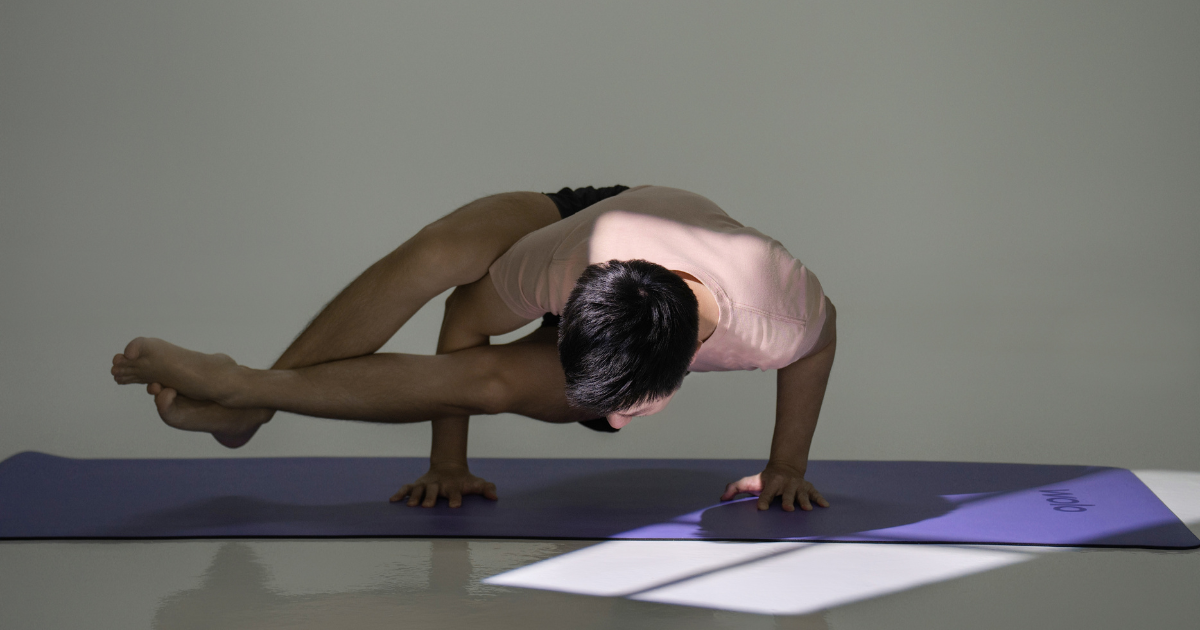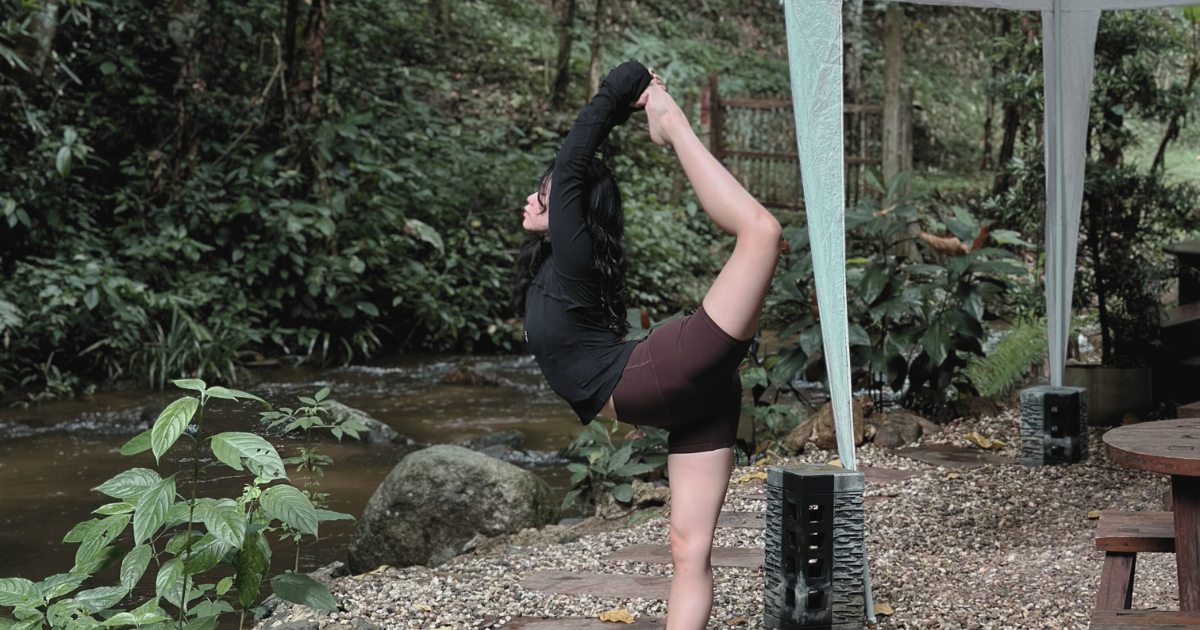If you’ve ever wanted to start yoga but felt overwhelmed by all the different styles and poses, you’re not alone. When I first got into yoga, I had no idea where to begin. That’s where Hatha Yoga comes in—it’s the perfect starting point for beginners!
Hatha Yoga focuses on simple, foundational poses that help you build strength, flexibility, and mindfulness without feeling rushed. Whether you’re looking to ease stress, improve posture, or just move your body more, this guide will walk you through 15 essential Hatha Yoga poses step by step.
By the end of this article, you’ll know exactly how to practice Hatha Yoga, avoid common mistakes, and create a beginner-friendly routine that fits your lifestyle.
What is Hatha Yoga?
Hatha Yoga is one of the most beginner-friendly yoga styles, focusing on slow, controlled movements, breath awareness, and relaxation. Unlike fast-paced styles like Vinyasa, Hatha Yoga allows you to hold poses longer, giving your body time to build strength, flexibility, and balance.
The word Hatha comes from Sanskrit, meaning “force” or “discipline,” but don’t worry—it’s not about pushing yourself too hard. Instead, it’s about finding a balance between effort and ease, making it perfect for beginners.
If you’ve ever felt stiff, stressed, or mentally drained, Hatha Yoga can help. It improves posture, relieves tension, enhances mindfulness, and boosts overall well-being. Whether you want to start a simple home practice or prepare for more advanced yoga styles, Hatha is a great foundation.
15 Essential Hatha Yoga Poses for Beginners
Here are 15 beginner-friendly Hatha Yoga poses to help you build strength, flexibility, and relaxation.
1. Mountain Pose (Tadasana)
Benefits: Improves posture, enhances balance, strengthens legs and core.
How to do it: Stand tall with feet together, arms relaxed at your sides. Engage your thighs, lift your chest, and reach the crown of your head toward the ceiling. Breathe deeply and hold for a few breaths.
Common mistakes: Locking the knees, slouching the shoulders, or holding the breath.
2. Child’s Pose (Balasana)
Benefits: Relieves stress, stretches the lower back, and calms the mind.
How to do it: Kneel on the mat, sit back on your heels, and stretch your arms forward while lowering your chest to the ground. Rest your forehead on the mat and breathe deeply.
Common mistakes: Keeping the hips lifted too high or holding tension in the shoulders.
Read more about Child’s Pose here
3. Downward-Facing Dog (Adho Mukha Svanasana)

Benefits: Strengthens the arms and legs, stretches the spine, and energizes the body.
How to do it: Start on your hands and knees, then lift your hips toward the ceiling, straightening your legs and pressing your heels toward the floor. Keep your head relaxed between your arms.
Common mistakes: Rounding the back, overextending the shoulders, or not distributing weight evenly.
4. Cobra Pose (Bhujangasana)
Benefits: Strengthens the spine, opens the chest, and improves posture.
How to do it: Lie on your stomach, place your hands under your shoulders, and slowly lift your chest while keeping your elbows slightly bent. Look slightly upward without straining your neck.
Common mistakes: Overarching the lower back or lifting the shoulders too high.
Learn more about Cobra Pose here
5. Warrior I (Virabhadrasana I)
 Benefits: Builds leg strength, improves balance, and opens the hips.
Benefits: Builds leg strength, improves balance, and opens the hips.
How to do it: Step one foot forward into a lunge, keeping the back leg straight. Raise your arms overhead, keeping your shoulders relaxed. Hold for a few breaths.
Common mistakes: Leaning too far forward or letting the front knee collapse inward.
6. Warrior II (Virabhadrasana II)
Benefits: Strengthens the legs and core, improves focus, and increases endurance.
How to do it: From Warrior I, open your hips and extend your arms parallel to the ground, gazing over your front hand. Keep your front knee bent at a 90-degree angle.
Common mistakes: Letting the front knee go past the toes or collapsing into the back leg.
Read everything about Warrior Poses here
7. Triangle Pose (Trikonasana)
 Benefits: Stretches the legs, hips, and spine while improving balance.
Benefits: Stretches the legs, hips, and spine while improving balance.
How to do it: Step your feet wide apart, extend one arm toward the sky, and reach the other toward your front foot, keeping both legs straight. Look up or forward.
Common mistakes: Rounding the back or overreaching with the arms.
8. Seated Forward Bend (Paschimottanasana)
Benefits: Stretches the hamstrings and lower back, calms the nervous system.
How to do it: Sit with legs extended and slowly fold forward, reaching for your feet or shins. Keep your spine long.
Common mistakes: Hunching the back or forcing the stretch too aggressively.
9. Bridge Pose (Setu Bandhasana)
 Benefits: Strengthens the back, glutes, and legs while opening the chest.
Benefits: Strengthens the back, glutes, and legs while opening the chest.
How to do it: Lie on your back, bend your knees, and place your feet hip-width apart. Press into your feet and lift your hips, keeping your shoulders relaxed.
Common mistakes: Overarching the lower back or letting the knees splay outward.
10. Chair Pose (Utkatasana)
Benefits: Strengthens the legs, glutes, and core while improving endurance.
How to do it: Stand with feet hip-width apart, bend your knees, and lower your hips as if sitting in an invisible chair. Keep your arms lifted.
Common mistakes: Letting the knees go past the toes or arching the lower back too much.
11. Standing Forward Bend (Uttanasana)
 Benefits: Stretches the hamstrings, calves, and lower back while calming the mind.
Benefits: Stretches the hamstrings, calves, and lower back while calming the mind.
How to do it: Stand with feet together, hinge at the hips, and fold forward, letting your hands reach toward the floor.
Common mistakes: Locking the knees or rounding the back too much.
12. Head-to-Knee Forward Bend (Janu Sirsasana)
 Benefits: Stretches the spine, shoulders, and hamstrings while calming the mind.
Benefits: Stretches the spine, shoulders, and hamstrings while calming the mind.
How to do it: Sit with one leg extended, bend the other foot to the inner thigh, and fold forward over the extended leg.
Common mistakes: Forcing the stretch or rounding the back excessively.
13. Seated Spinal Twist (Ardha Matsyendrasana)
Benefits: Increases spinal flexibility and aids digestion.
How to do it: Sit with one leg extended and the other bent, placing the opposite elbow outside the bent knee. Twist gently.
Common mistakes: Twisting too forcefully or slouching.
14. Legs Up the Wall Pose (Viparita Karani)
 Benefits: Relieves tension in the legs, improves circulation, and promotes relaxation.
Benefits: Relieves tension in the legs, improves circulation, and promotes relaxation.
How to do it: Lie on your back and extend your legs up against a wall, keeping your arms relaxed.
Common mistakes: Holding tension in the shoulders or forcing the legs straight.
15. Corpse Pose (Savasana)
Benefits: Promotes deep relaxation, reduces stress, and helps with mindfulness.
How to do it: Lie on your back with arms by your sides, palms facing up. Close your eyes, relax every muscle, and breathe naturally.
Common mistakes: Holding tension in the body or letting the mind race instead of focusing on relaxation.
Hatha Yoga vs. Other Yoga Styles
Hatha Yoga is the foundation of most modern yoga styles, but it differs in pace and focus. Compared to Vinyasa Yoga, which flows quickly from pose to pose, Hatha Yoga is slower, allowing for longer holds and deeper breath control—making it ideal for beginners.
Ashtanga Yoga is more structured and intense, following a fixed sequence of poses, while Yin Yoga is even slower than Hatha, emphasizing deep stretching and relaxation. Power Yoga is more physically demanding, building strength and endurance.
If you're looking for a balanced, beginner-friendly practice, Hatha Yoga is the perfect starting point. Want to learn more about the types of yoga, read another article here.
How to Practice Hatha Yoga for Maximum Benefits
Practicing Hatha Yoga is simple, but a few key habits will help you get the most out of it.
- Hold each pose for the right duration. For beginners, aim to hold each pose for 15-30 seconds (or 3-5 breaths). As you progress, you can extend it to 1-2 minutes for deeper benefits.
- Focus on your breath. Breathing is just as important as the poses. Try to inhale as you lengthen or open your body and exhale as you fold or twist. This keeps your movements smooth and mindful.
- Choose the best time to practice. Morning sessions boost energy and focus, while evening sessions help release tension and improve sleep. Find a time that works best for you and stick to it.
- Follow a simple routine. Start with a 5-minute warm-up, move into core poses (like Warrior or Downward Dog) for 10-15 minutes, and finish with cool-down stretches and Savasana.
- Stay consistent. Even 10-15 minutes a day is better than one long session per week. Keep it simple, and you’ll see progress over time!
Now, let’s go over the common mistakes to avoid when practicing Hatha Yoga.
Common Mistakes to Avoid in Hatha Yoga
A common issue is forcing flexibility instead of focusing on form. Many beginners try to push too deep into poses, thinking they need to look a certain way. But yoga is about feeling the stretch, not forcing it. Instead of trying to touch your toes in a forward bend, focus on keeping your spine long and bending from the hips. With time, flexibility will come naturally.
Rushing through poses is another mistake. Hatha Yoga is meant to be slow and controlled, giving your body time to adjust. If you move too fast, you risk losing balance and proper alignment. It’s better to hold a pose for a few steady breaths than to rush into the next one.
Lastly, many beginners ignore alignment cues and end up with bad posture. If a pose feels uncomfortable or strained, check your alignment. Simple adjustments—like keeping knees stacked over ankles in lunges or engaging your core in backbends—can make a huge difference in preventing injuries and improving your practice.
FAQs About Hatha Yoga
1. Is Hatha Yoga good for beginners?
Absolutely! Hatha Yoga is one of the best styles for beginners because it focuses on slow, controlled movements, making it easy to learn the basics without feeling overwhelmed. It also helps build strength, flexibility, and mindfulness at a comfortable pace.
2. How often should I practice Hatha Yoga?
You can practice Hatha Yoga as often as you like, even daily. If you’re just starting, 3-4 times a week for 20-30 minutes is a great goal. As you build confidence, you can increase the duration and frequency.
3. Can Hatha Yoga help with stress and anxiety?
 Yes! Hatha Yoga combines deep breathing with gentle movements, helping to calm the nervous system and reduce stress. Poses like Child’s Pose, Legs Up the Wall, and Savasana are especially effective for relaxation.
Yes! Hatha Yoga combines deep breathing with gentle movements, helping to calm the nervous system and reduce stress. Poses like Child’s Pose, Legs Up the Wall, and Savasana are especially effective for relaxation.
4. What’s the difference between Hatha Yoga and Vinyasa Yoga?
Hatha Yoga is slower, focusing on holding poses for longer, while Vinyasa Yoga is more dynamic, linking breath to movement in a flowing sequence. Hatha is better for beginners, while Vinyasa is great for those who enjoy a faster-paced practice.
5. Do I need to be flexible to start Hatha Yoga?
Not at all! Yoga helps build flexibility over time. The key is to start where you are, listen to your body, and practice consistently—your flexibility will naturally improve!
Start Your Hatha Yoga Journey Today!
Hatha Yoga is one of the best ways to build strength, flexibility, and mindfulness—without feeling overwhelmed. Whether you’re a complete beginner or looking to deepen your practice, the key is to start small and stay consistent. Even just 10-15 minutes a day can make a difference!
So, roll out your mat, try these poses, and enjoy the process. If you found this guide helpful, share it with a friend or bookmark it for later. Want more yoga tips? Subscribe to our newsletter for more beginner-friendly guides and routines! Happy practicing! 🧘♂️✨





